When people picture retirement, they imagine freedom — finally having the time to travel, spend days with grandkids, or just enjoy slow mornings with coffee. But there’s a quiet truth: what can derail retirement isn’t always what we expect. Market downturns get attention, but far more retirees see their plans shaken by subtle, preventable risks.
In this latest edition of Prosperous Living we’ll look at six overlooked retirement risks and show how to plan ahead so you can spend more time living your ideal retirement and less time worrying.
1. The Silent Erosion of Purchasing Power
Inflation may feel like a headline issue today, but it’s always been there. A gallon of milk that cost $2.00 twenty years ago might be $5.00 now. Over a 30-year retirement, even a modest 2% inflation rate can cut your money’s buying power nearly in half.
How to protect yourself:
- Keep some growth in your portfolio even after retiring — 100% bonds or CDs may feel “safe,” but they rarely outpace inflation.
- Consider guaranteed income streams that have cost-of-living adjustments or laddered investments that mature over time.
- Review spending annually and adjust — small, regular tweaks beat big, painful cuts later.
2. Living Longer Than You Planned
It’s wonderful news that life expectancy keeps climbing (doctors sure have done a great job) — but it means retirement may last 30+ years. Outliving your savings is a real risk.
How to protect yourself:
- Base your retirement plan on living well into your 90s, not the average life expectancy.
- Delay Social Security benefits if possible — each year after full retirement age increases your lifetime income.
- Look at annuities or other lifetime income options to ensure you never outlive a portion of your savings.
3. Rising Healthcare & Long-Term Care Costs
Even with Medicare, healthcare expenses can be surprising. Fidelity estimates a 65-year-old couple may spend over $300,000 on medical costs over retirement — and that doesn’t include long-term care.
How to protect yourself:
- Build healthcare into your retirement budget — don’t treat it as an afterthought.
- Use HSAs (Health Savings Accounts) if available; they’re triple tax-advantaged and great for future medical bills.
- Explore long-term care insurance or alternatives such as life insurance with LTC riders.
- Think location — different states and countries have widely different healthcare costs. For example: I was recently in Colombia and paid $5.75 USD for a full dental x-ray.
4. Taxes in Retirement (They Don’t Disappear!)
Many assume retirement means lower taxes, but that’s not always true. Between Social Security, required minimum distributions (RMDs), and investment income, some retirees end up in higher brackets than expected.
How to protect yourself:
- Diversify your “tax buckets”: pre-tax (401k, IRA), Roth accounts, and taxable investments.
- Consider Roth conversions in low-income years before RMDs kick in.
- Know how Social Security is taxed — up to 85% can be taxable if your income is high enough.
- Understand how the new legislation recently passed changes things.
5. Sequence of Returns Risk
Imagine retiring in 2008 — your portfolio drops 30% right as you start withdrawals. Even if the market recovers later, early losses can permanently damage your retirement.
How to protect yourself:
- Keep a 2–3 year cash reserve or short-term bond bucket to avoid selling investments when the market’s down.
- Consider dynamic withdrawal strategies — taking slightly less during down years and more when the market’s strong.
- Rebalance regularly; don’t let a bull market push your risk higher than you intend.
6. Behavioral & Lifestyle Risks
The biggest retirement risk isn’t always financial — it’s personal. Many new retirees struggle with identity, boredom, or spending more than planned to fill the void of work.
How to protect yourself:
- Plan your time as carefully as your money. What will your days look like?
- Explore part-time or consulting work, not just for income but for structure and purpose.
- Be realistic about big purchases — travel, RVs, second homes — and test them (rent, borrow, or try first).
Pulling It All Together — A Retirement Plan That’s Flexible
A great retirement plan isn’t rigid; it adapts.
- Annual check-ups: Review spending, portfolio performance, and goals every year.
- Stress test: Run scenarios — What if inflation spikes? What if you live to 98? What if markets drop 20%?
- Keep cash reserves: Enough for 1–3 years of spending helps you avoid panic selling.
- Balance protection and growth: Some safety for peace of mind, but enough risk to outpace inflation.
The Emotional Side — Why Proactive Planning Matters
The numbers matter, but so does peace of mind. Retirement is supposed to be about living — not spreadsheet stress.
Planning ahead lets you say yes to things that matter: a grandchild’s wedding flight, helping a loved one, volunteering, or exploring new hobbies. When you understand your risks, you make decisions with clarity, not fear.
Final Thoughts
The headlines often focus on big market swings, but the most damaging retirement risks are quiet and gradual: inflation, healthcare costs, tax surprises, bad timing, and even lifestyle drift.
The good news? Each of these can be addressed with planning and strategy. The sooner you stress test your plan and make small adjustments, the more confident you’ll feel about spending and enjoying what you’ve built.
If you’re not sure how these risks fit into your plan, consider a check-in with a financial professional. Sometimes just running the numbers with someone objective is enough to turn worry into action. Thank you for reading and Cheers to Prosperous Living!
